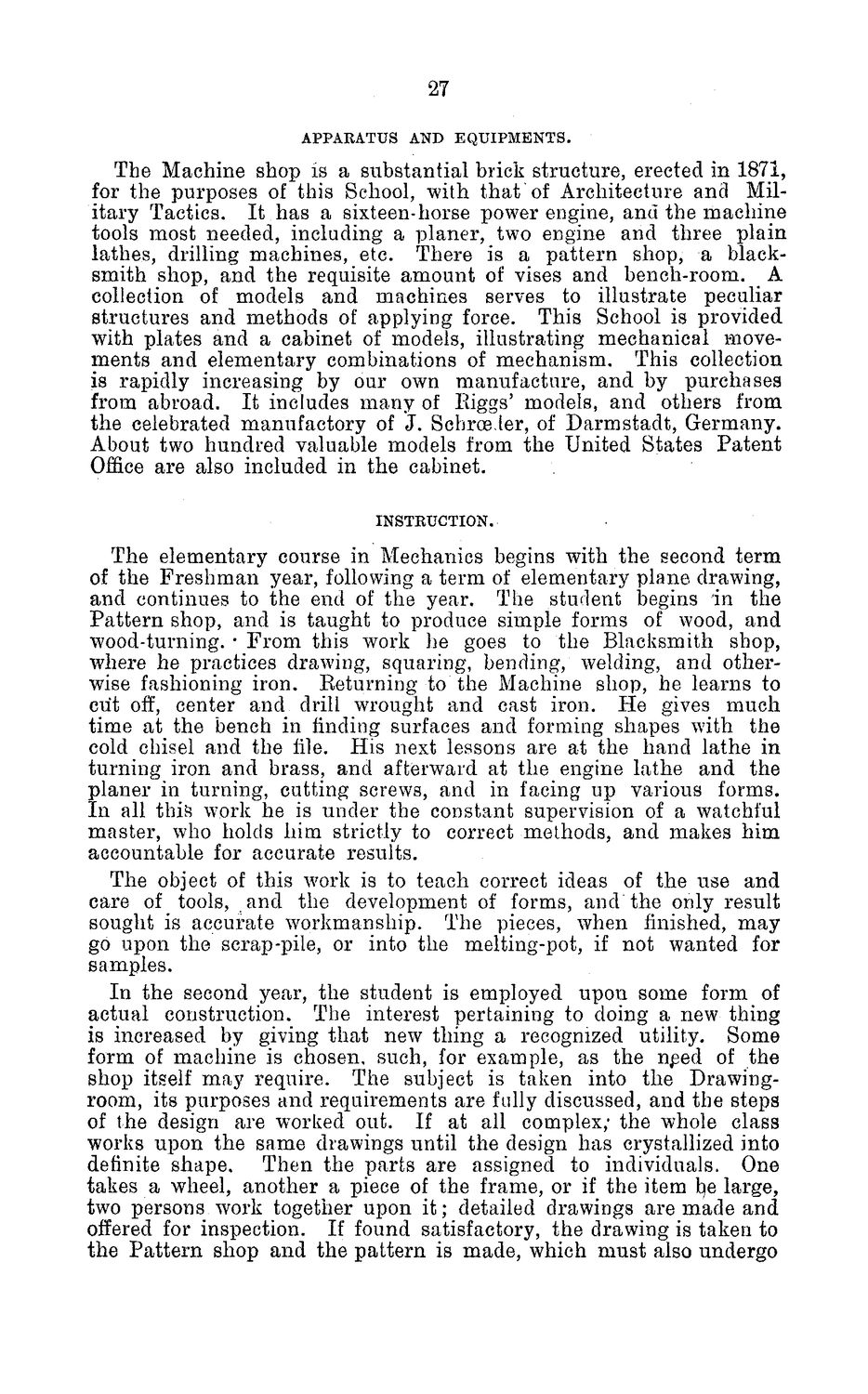| |
| |
Caption: Board of Trustees Minutes - 1884
This is a reduced-resolution page image for fast online browsing.

EXTRACTED TEXT FROM PAGE:
27 APPARATUS AND EQUIPMENTS. The Machine shop is a substantial brick structure, erected in 1871, for the purposes of this School, with that of Architecture and Military Tactics. It has a sixteen-horse power engine, and the machine tools most needed, including a planer, two engine and three plain lathes, drilling machines, etc. There is a pattern shop, a blacksmith shop, and the requisite amount of vises and bench-room. A collection of models and machines serves to illustrate peculiar structures and methods of applying force. This School is provided with plates and a cabinet of models, illustrating mechanical movements and elementary combinations of mechanism. This collection is rapidly increasing by our own manufacture, and by purchases from abroad. It includes many of Biggs' models, and others from the celebrated manufactory of J. Scbrceler, of Darmstadt, Germany. About two hundred valuable models from the United States Patent Office are also included in the cabinet. INSTRUCTION. The elementary course in Mechanics begins with the second term of the Freshman year, following a term of elementary plane drawing, and continues to the end of the year. The student begins in the Pattern shop, and is taught to produce simple forms of wood, and wood-turning. • From this work he goes to the Blacksmith shop, where he practices drawing, squaring, bending, welding, and otherwise fashioning iron. Beturning to the Machine shop, he learns to cut off, center and drill wrought and cast iron. He gives much time at the bench in finding surfaces and forming shapes with the cold chisel and the file. His next lessons are at the hand lathe in turning iron and brass, and afterward at the engine lathe and the planer in turning, cutting screws, and in facing up various forms. In all this work he is under the constant supervision of a watchful master, who holds him strictly to correct methods, and makes him accountable for accurate results. The object of this work is to teach correct ideas of the use and care of tools, and the development of forms, and the only result sought is accurate workmanship. The pieces, when finished, may go upon the scrap-pile, or into the melting-pot, if not wanted for samples. In the second year, the student is employed upon some form of actual construction. The interest pertaining to doing a new thing is increased by giving that new thing a recognized utility. Some form of machine is chosen, such, for example, as the npecl of the shop itself may require. The subject is taken into the Drawingroom, its purposes and requirements are fully discussed, and the steps of the design are worked out. If at all complex; the whole class works upon the same drawings until the design has crystallized into definite shape. Then the parts are assigned to individuals. One takes a wheel, another a piece of the frame, or if the item h,e large, two persons work together upon it; detailed drawings are made and offered for inspection. If found satisfactory, the drawing is taken to the Pattern shop and the pattern is made, which must also undergo
| |